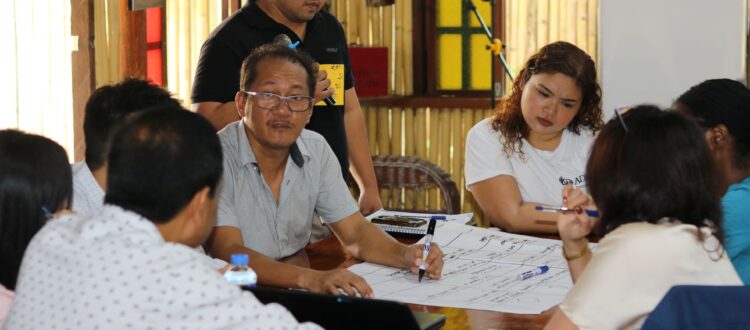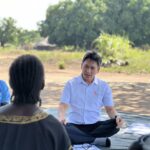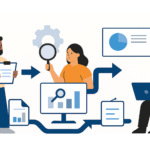How to build an Inclusive and Impactful Theory of Change: Practical Tips for Non-Profits
Learn practical steps to design a Theory of Change that integrates gender equality and intersectionality. Tailored for non-profits, with insights from Global Affairs Canada’s RBM Tip Sheet.
A clear and thoughtful Theory of Change (ToC) is essential for successful Results-Based Management (RBM). For non-profits, it’s not just about defining activities and outcomes—it’s about doing so in a way that reflects gender equality, equity, and intersectionality. Drawing on Global Affairs Canada’s (GAC) RBM Tip Sheet: Questions and Approaches for Theory of Change Clarification and Refinement, this post highlights key ways to refine your ToC for greater impact.
Why a Theory of Change is Crucial for Non-Profits
A ToC maps the journey of change for a project, connecting activities to outcomes and, ultimately, to long-term impact. It helps ensure that your program aligns with community needs and donor expectations while addressing potential challenges and risks. Importantly, a ToC that integrates gender equality and intersectionality ensures that diverse voices are heard and that change reflects the needs and perspectives of different groups.
Steps to Create an Inclusive and Impactful Theory of Change
1. Start with Inclusive Outcomes
- Ask:
- Why are we doing this project? Who says so?
- Whose voices are being included?
- How will diverse sub-groups benefit differently, and what specific barriers might they face?
Define your ultimate outcome with these considerations in mind. For example, instead of broadly stating, “improved economic opportunities,” specify, “increased equitable access to economic opportunities for women and marginalized communities.”
Tip: Involve stakeholders—especially women, youth, and marginalized groups—in shaping your ToC. Co-design ensures inclusivity and builds buy-in.
2. Ensure Clear Links Between Activities and Outcomes
- Ask questions such as:
- How are the planned activities logically linked to the immediate and intermediate outcomes?
- What power dynamics might influence the success of these activities for different groups?
- What social or cultural factors could limit the success of these activities, and how can they be addressed?
Explicitly consider how gender and equity intersect with your activities. For instance, a training program might need to address barriers like women’s caregiving responsibilities or transportation challenges to ensure equitable participation.
Tip: Visual tools, like diagrams or sticky notes, can help map these connections and uncover gaps.
3. Articulate Assumptions Through an Intersectional Lens
- Identify the conditions necessary for success and assess how they affect different groups. Ask:
- What barriers might women or marginalized groups face in achieving outcomes?
- What assumptions are we making about who has access to resources or decision-making power?
- What biases might we unconsciously bring into the design of this project?
For example, you might assume that raising awareness about health services will result in increased usage. However, this assumption should also account for gender-specific factors like safety concerns, cultural norms, or caregiving responsibilities that might limit women’s ability to access the health services. Questions to unearth these assumptions include:
– What are we assuming about the availability of time or resources for women and marginalized groups?
– How might cultural norms shape participation differently for sub-groups?
Tip: Document these assumptions clearly in your narrative and revisit them as the project progresses.
4. Clarify Outputs and Causal Links
- Ensure your outputs are concrete and directly tied to the project’s activities. Ask:
- How do these outputs lead directly to immediate outcomes?
- How do these outputs advance gender equality and equity?
- Are the outputs designed to meet the needs of all sub-groups equitably?
For instance, if the output is “facilitation of vocational training sessions for women and youth,” ensure these sessions are accessible by providing childcare, flexible scheduling, or offering transportation support. Demonstrate the causal pathway by specifying how these sessions will increase participants’ technical skills in areas like sewing, IT, or sustainable agriculture (immediate outcome), leading to increased employment opportunities or small business creation (intermediate outcome), and ultimately reducing household poverty and fostering economic independence (ultimate outcome).
Tip: Keep outputs realistic and focused on what your organization can directly control.
Using the GAC Tip Sheet
For more guidance, check out the RBM Tip Sheet: Questions and Approaches for Theory of Change Clarification and Refinement created by Global Affairs Canada. It’s a useful tool for refining your ToC with clarity and purpose.
This blog was written by Paula Nicole Richardson, Salanga’s Director of Evaluation, Learning and Impact. Connect with me on LinkedIn: Paula Nicole Richardson. I’d love to hear your thoughts and experiences in designing a Theory of Change!




